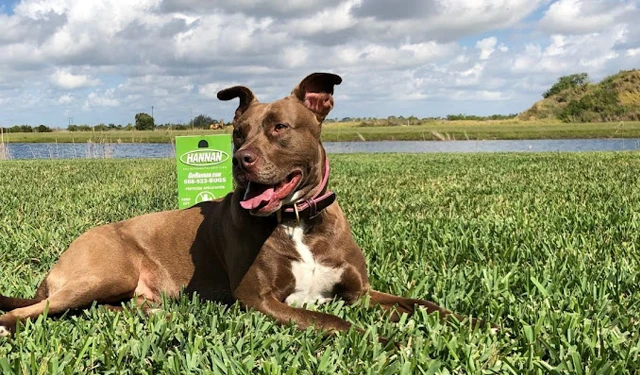Roaches
Get a free estimate

Cockroaches
Cockroaches, are insects that belong to the order Blattodea. They have been around for millions of years and are one of the most resilient and adaptable insect species on Earth. There are thousands of species of cockroaches, but the ones most commonly encountered by humans are the German cockroach, American cockroach, Oriental cockroach, and brown-banded cockroach. Roach pest control involves a combination of strategies to eliminate infestations, prevent their recurrence, and create an environment that is not conducive to cockroach survival.
Determine the species of cockroach you are dealing with. Different species have different behaviors and preferences, which can affect your control strategies.
American Roach
The American cockroach, Periplaneta americana (Linnaeus), is the largest of the common peridomestic cockroaches measuring on average 4 cm in length. It occurs in buildings throughout Florida, especially in commercial buildings. In the northern United States, the cockroach is mainly found in steam heat tunnels or large institutional buildings. The American cockroach is second only to the German cockroach in abundance.
It is found mainly in basements, sewers, steam tunnels, and drainage systems (Rust et. al. 1991). This cockroach is readily found in commercial and large buildings such as restaurants, grocery stores, bakeries, and anywhere food is prepared and stored. The American cockroach is rarely found in houses, however, infestations can occur after heavy rain. They can develop to enormous numbers, greater than 5,000 sometimes being found in individual sewer manholes (Rust et. al. 1991).
Credit: https://entnemdept.ufl.edu/creatures/urban/roaches/american_cockroach.htm
Brown Banded Roach
Brownbanded cockroaches prefer warm and dry locations, such as near refrigerator motor housings, on the upper walls of cabinets, and inside pantries, closets, dressers, and furniture in general. They can also be found behind picture frames and beneath tables and chairs, and inside clocks, radios, light switch plates, doorframes, and dressers. It is common to find them hiding nearer the ceiling than the floor and away from water sources. Accurate identification is paramount to controlling brown banded cockroaches. Control strategies for other cockroaches will not be efficacious for brown banded cockroaches.
The Brown-banded roach is light brown to dark brown in color and have a flattened body. The adult roach is about 10-14 mm in length. They are named “brown-banded” due to the presence of distinct brown bands across their wings and abdomen. Female brown-banded roaches produce egg capsules, also known as oothecae, which they attach to surfaces. Each capsule contains around 10-18 eggs. The female carries the egg capsule for a short period before attaching it to a suitable location. After an incubation period of about 50-60 days, the eggs hatch into nymphs, which undergo several molts before reaching adulthood.
Credit: https://extension.psu.edu/brown-banded-cockroaches
Prevent future infestations by maintaining good hygiene practices:
- Keep your home clean and clutter-free.
- Store food in sealed containers.
- Eliminate water sources.
- Seal off entry points.
- Regularly inspect and maintain your home’s exterior.
Maintain a clean living environment to eliminate food and water sources that attract roaches:
- Store food in airtight containers and clean up spills and crumbs promptly.
- Regularly clean and vacuum your home, paying attention to cracks and crevices.
- Empty and clean pet food bowls after each feeding.
- Keep trash in sealed containers and empty them regularly.
Remember that cockroach control is an ongoing effort. Even after an infestation is resolved, continued vigilance and maintenance are necessary to prevent future problems. Continuously monitor for cockroach activity, especially after treatments. Maintain sanitation practices and be vigilant about sealing off any entry points.
Smoky Brown Cockroach
The Smoky Brown Cockroach, scientifically known as Periplaneta fuliginosa, is a common species of cockroach found in various parts of the world. Here are some key characteristics and information about the Smoky Brown Cockroach:
- Appearance: Smoky Brown Cockroaches are relatively large cockroaches, measuring about 1 to 1.5 inches in length. They are dark brown to black in color, with a shiny, almost polished appearance. Their wings extend beyond their abdomen.
- Habitat: These cockroaches prefer warm and humid environments. They are often found outdoors in places like tree holes, leaf litter, and mulch. However, they can also enter buildings and homes in search of food, water, and shelter.
- Diet: Smoky Brown Cockroaches are omnivorous scavengers. They feed on a wide variety of organic matter, including decaying plants, dead insects, and food scraps. They are known to be attracted to lights at night.
- Behavior: Like many cockroach species, Smoky Brown Cockroaches are primarily nocturnal, meaning they are most active at night. They are fast runners and are capable of flying short distances.
- Lifecycle: They undergo incomplete metamorphosis, which means they hatch from egg cases (oothecae) into nymphs and gradually grow into adults. The nymphs look similar to adults but are smaller and lack wings.
- Health Concerns: Smoky Brown Cockroaches can be a concern for human health. They can carry disease-causing pathogens and allergens that may trigger asthma and allergies in some individuals. Additionally, their presence in homes and buildings can be a sign of unsanitary conditions.
- Control: Controlling Smoky Brown Cockroaches involves sanitation, sealing entry points, and using chemical treatments if necessary. It’s important to eliminate their food and water sources and reduce hiding places.
If you suspect an infestation of Smoky Brown Cockroaches in your home or business, it’s advisable to contact Hannan Environmental Services for proper identification and effective treatment. Additionally, taking proactive measures to prevent infestations, such as sealing cracks and gaps in buildings and maintaining cleanliness, can help reduce the likelihood of these roaches becoming a problem.
Call Hannan Environmental Services or click here for a FREE no-obligation quote today! You can also find Hannan and learn more about us on Facebook.


